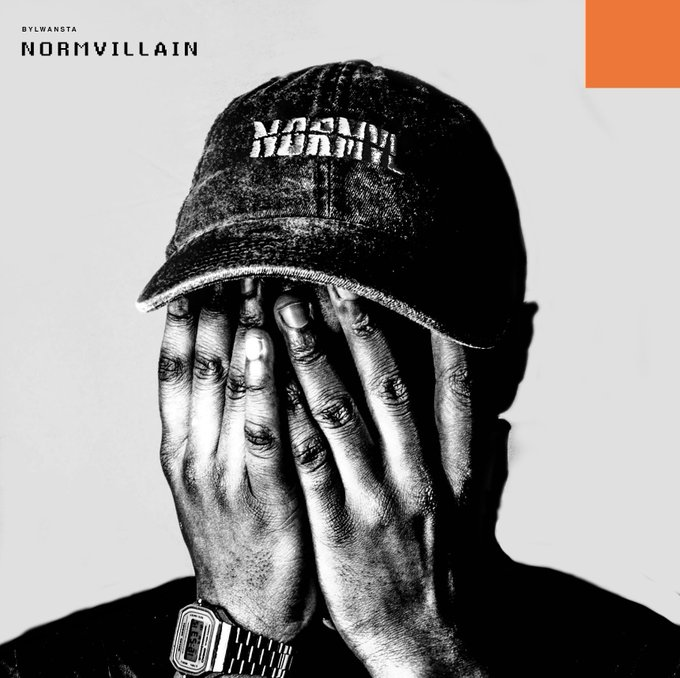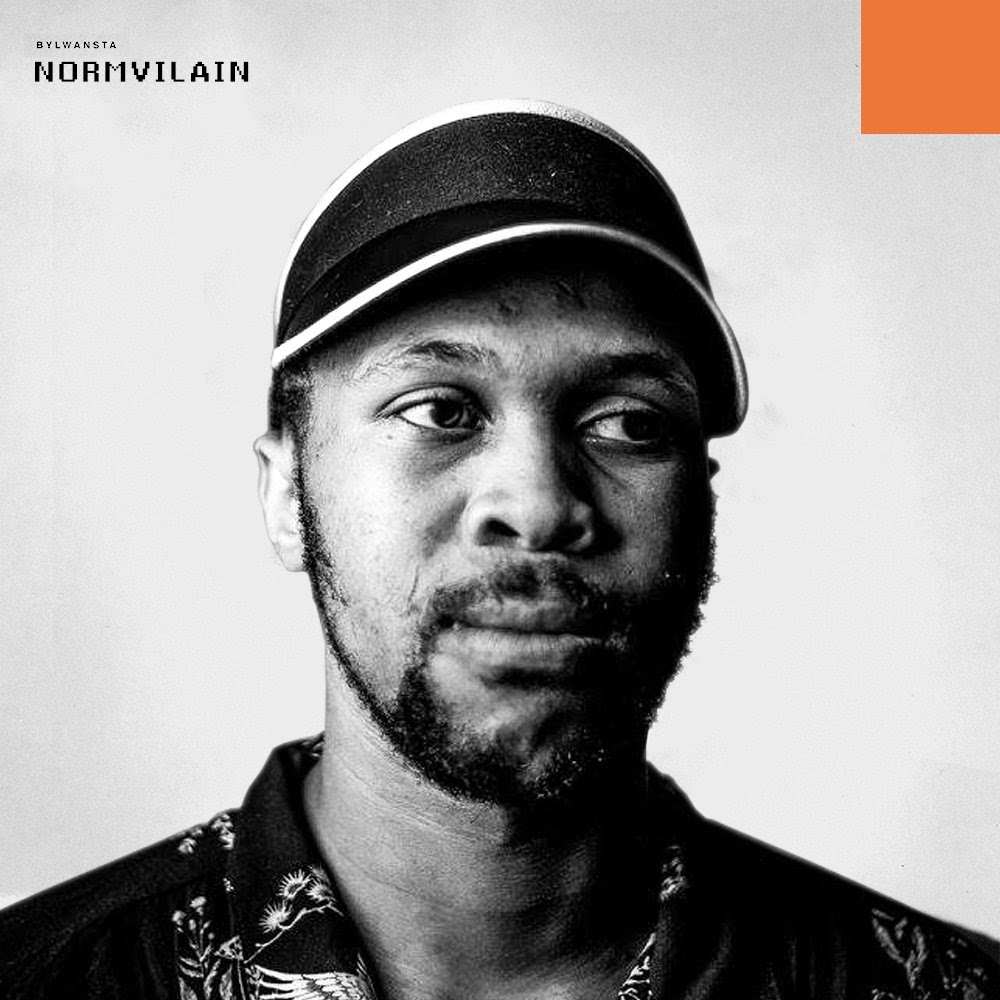In late October, ByLwansta put pencil to paper after a long time, and the first image he drew was inspired by his favourite cover art. (Image courtesy of ByLwansta)
The multi-talented ByLwansta recently put out Spijønget, a two-chapter album he recorded in Durban and Johannesburg. A prodigious storyteller and gifted rhymer, his releases are immersive worlds. He spoke to the Mail and Guardian about DOOM and his favourite cover art.
It seems to me that DOOM was able to control his own story by amassing the skills related to what he wanted to achieve. For example, he played a huge role in terms of his own cover art. What are the tangible ways, and the intangible ones, that he has influenced you as an artist?
His consideration for the branding and design aspects of the idea of MF DOOM. I came across a video in which he discusses the reasons behind the mask. As soon as he explains it, you realise how much intention he had when it comes to his artistry. He put on the mask to deter the idea of “Okay, it’s all about how you look”; you know, people make their first impressions. But ironically, it became one the most iconic images in hip-hop. He might not have predicted how big it would be, but he knew it would be something iconic. That was inspirational for me, as someone who pays attention to visual communication and subconscious branding stuff that stays in your mind.
The more tangible stuff is that I’m a lyricist as well. My colleague Sam Turpin, after DOOM’s passing, posted a picture saying, “Thanks for letting us know that it’s okay to be different.” I resonated with that so much because that is very much a DOOM trait: how he embraces difference.
As far as lyricism, there’s a song I wrote in 2019 called It’s Late, off chapter one of the Spijønget series. I approached it with very careful consideration to my rhyme scheme, caring less about whatever else I’m about to say; just saying whatever I’m feeling.
How do vulnerability and concealment figure in your craft as an emcee? How do you work with those as tools?
When I write, I don’t reach too far from my own reality. For a very long time, music was an outlet for me to vent and get my frustrations out there. When I moved to Durban [from Kokstad] to study graphic design in 2014, it was my first time living away from home.
There was a lot of stuff I was exposed to, as far as introspection, learning about myself from interacting with a lot of people, not being happy with what I was learning about myself — just being frustrated in the student accommodation by myself, despite living with nine other people.
There is a scene toward the end of 8 Mile, the Eminem film: it’s the last rap battle, and he just decides he is gonna gag on himself because, in doing that, it takes away the power of what the other guy could say.
That was something I applied to myself for a very long time. I thought that was good, but along the line it transformed into being self-deprecative. I’d like to think I grew out of that and I’ve assumed a different level of vulnerability; where it was more honesty than self-deprecation. If you want something amazing from me, it has to have connected with me, an experience I can retell.
 ByLwansta’s favourite cover art is the Madlib and MF DOOM collaboration Madvillainy . It led him to a deep dive of DOOM’s artistry. (Image courtesy of ByLwansta)
ByLwansta’s favourite cover art is the Madlib and MF DOOM collaboration Madvillainy . It led him to a deep dive of DOOM’s artistry. (Image courtesy of ByLwansta)
How did you respond to news of DOOM’s passing?
It was like some air was gently punched out of my stomach. Like, damn, is this it? And then I started to replay his impact; how just the other day I had created a sketch of DOOM, the cover of Madvillainy, just because I felt like I wanted to draw. A lot of the stuff started playing back. I also have a CD and I was like, “Yoh, okay, so now does that mean it’s over?” because he is no longer around to make any more music. It was very unfortunate. It’s like we lost one of our star players in our team and it’s disappointing.
The sketch: you did that before you found out?
It was like in the last month or two. It was the first time I had pulled out a pencil and a paper in a very, very long time. One of the first things I drew was MF DOOM’s mask, his portrait.
Do you know why that happened?
I guess maybe in my subconscious, when I think about where my interests meet, it is cover art. That Madvillainy cover is my favourite cover art of all time. It was the first image that came to mind as far as interpreting my appreciation for DOOM. It speaks about the power of his visual identity. If you’re a fan of hip-hop, the image of this mask is lodged in your subconscious. It’s there forever. Even in his passing, I don’t think he will ever be forgotten.
 ‘ I love the colour orange. I feel like it represents who I am really well, because it is too red for the yellow and it is too yellow for the red. It’s neither, but it is in the middle.’ (Image courtesy of ByLwansta)
‘ I love the colour orange. I feel like it represents who I am really well, because it is too red for the yellow and it is too yellow for the red. It’s neither, but it is in the middle.’ (Image courtesy of ByLwansta)
You came across that artwork before you’d even heard the music. Do you remember how you first came across the art and how it led you to the music?
I was at a record store in Durban called Khaya Records. A friend of mine would always frequent the store for chats with the owner to ask if we could use the space, but also attend different functions there.
Vinyl is large scale. If you are experiencing cover art for the first time on vinyl, it’s like experiencing an artist for the first time through a live performance. It’s grand. Seeing that cover, you just see a man in a mask. It’s a portrait of him: he’s centred and you’re, like, so perplexed by it. Because a portrait is meant to say, “Hey, this is who I am. This is my personality.” That’s how they depicted DOOM in that case, but it’s ironic because this man is wearing a mask. I don’t know who this man is. It really interested me. I was like, “What? This is so fascinating.”
I think the importance of cover art is so fascinating, because this is that first interaction you have with the music and studies say our eyes consume first; our eyes carry our most predominant sense. Soon as I saw that cover art, it was very easy for me to be drawn in.
And then, at the commune I was living in in first year, the homies next door would play MF DOOM all the time. In fact one of them was also a rapper and he came to my room with a bunch of MF DOOM instrumentals and I recorded his EP, just based off those instrumentals.
So that was my first interaction with the music after having seen the cover art. After that, another friend of mine told me that my raps were too wordy; I was using too many words in my lines. I was like, “What do you really mean?” and he started using MF DOOM as a case study. After he did that, I was like, “Cool, let me go study this MF DOOM guy.” It wasn’t even a week, I bought a hard copy through Loot. I ordered the hard copy [of Madvillainy] and, as they say, the rest is history.
That cover art was the first interaction I had. It was such a strong image, graded so well. It was created by Eric Coleman, the photographer, and Jeff Jank, who was the designer. It was actually inspired by a Madonna cover, her self-titled project. It was also grey.
I love the colour orange. I feel like it represents who I am really well, because it is too red for the yellow and it is too yellow for the red. It’s neither, but it is in the middle. I always felt like that’s where I was. In that artwork there is an orange block in the top right corner. And it is like a spot colour that’s on the side on top of this greyscale image. It is so bizarre because a spot colour is meant to direct your attention, but they have put it on the top corner and they have prioritised this mysterious figure. It is such a mind fuck. So beautiful. It led me to the music and made me a big fan of MF DOOM.